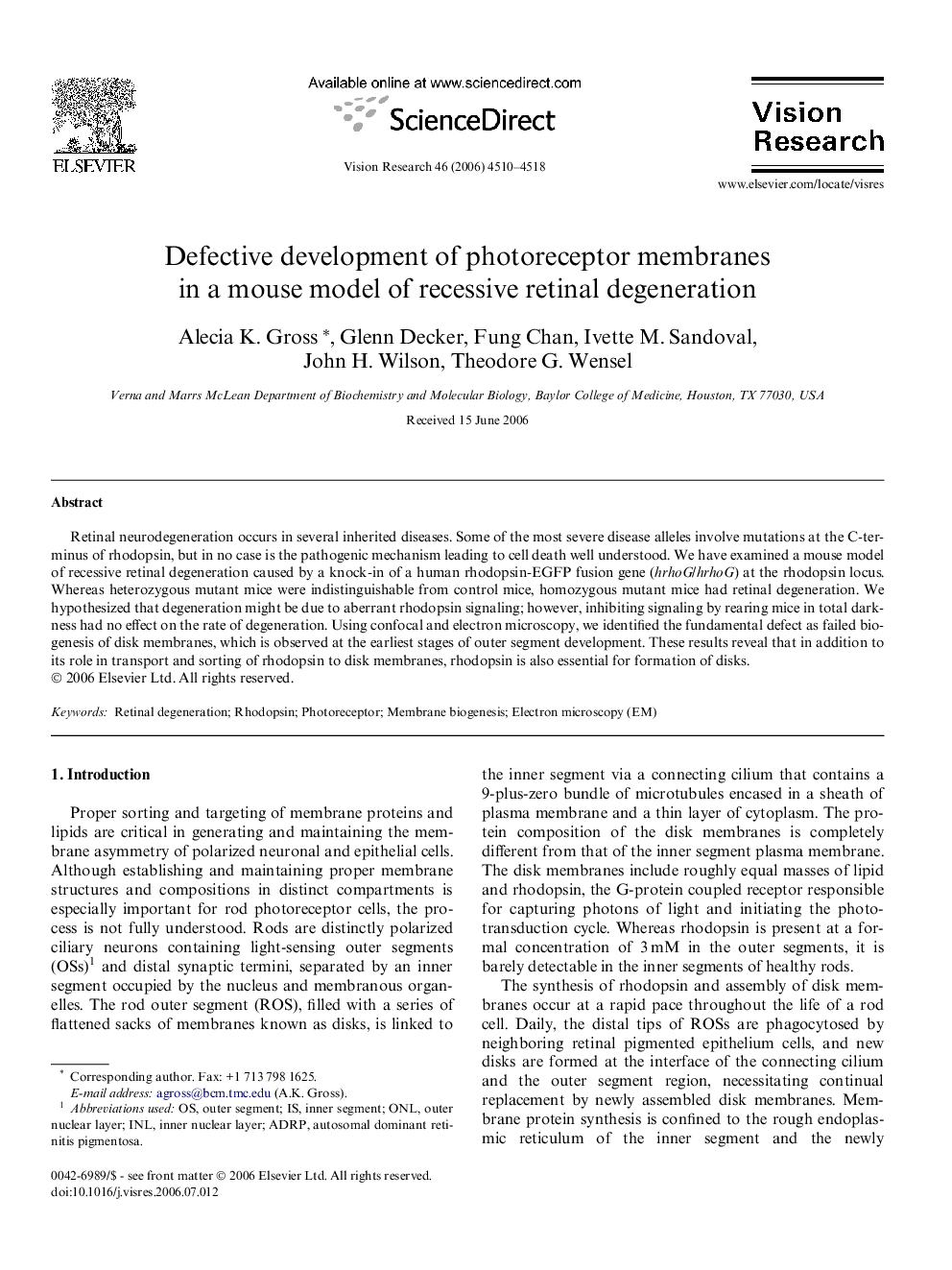| Article ID | Journal | Published Year | Pages | File Type |
|---|---|---|---|---|
| 4036046 | Vision Research | 2006 | 9 Pages |
Retinal neurodegeneration occurs in several inherited diseases. Some of the most severe disease alleles involve mutations at the C-terminus of rhodopsin, but in no case is the pathogenic mechanism leading to cell death well understood. We have examined a mouse model of recessive retinal degeneration caused by a knock-in of a human rhodopsin-EGFP fusion gene (hrhoG/hrhoG) at the rhodopsin locus. Whereas heterozygous mutant mice were indistinguishable from control mice, homozygous mutant mice had retinal degeneration. We hypothesized that degeneration might be due to aberrant rhodopsin signaling; however, inhibiting signaling by rearing mice in total darkness had no effect on the rate of degeneration. Using confocal and electron microscopy, we identified the fundamental defect as failed biogenesis of disk membranes, which is observed at the earliest stages of outer segment development. These results reveal that in addition to its role in transport and sorting of rhodopsin to disk membranes, rhodopsin is also essential for formation of disks.
